15 Types of Worms to Find & Some to Avoid in the Wild
Author: Jen Worst | Editor: Omar Alonso
Review & Research: Jen Worst & Chris Miller
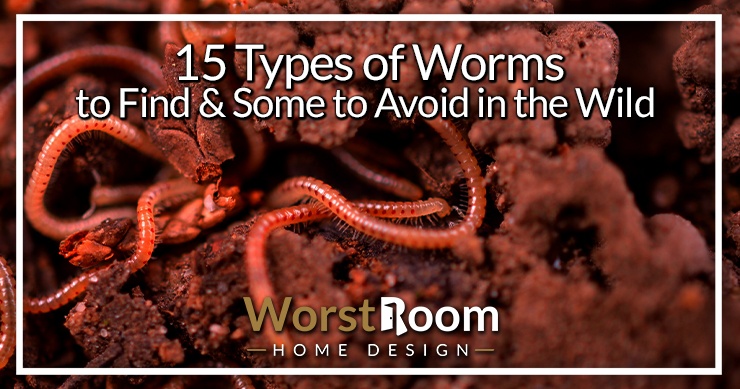
What do you think of when you hear "worm"? Most people think of earthworms generally. But the different types of worms are more than you can imagine. There are more than one million species in the world.
A worm is an invertebrate animal with no easy definition, and the concept is deceiving to many. The few hundred thousand species are so different from one another.
In terms of the history of life, the phylum of worms is a very large and old group. And that's why their evolution in different environments is remarkable.
The divergent nature of worms has made them survive even in critical conditions. Without further ado, let's check out worms and their types.
15 Types of Worms
Worm breeds can live in the ocean, in freshwater, in the soil, or even inside a human body. Among so many varieties of worms, we have listed down the most common worm types for you.
Tapeworms
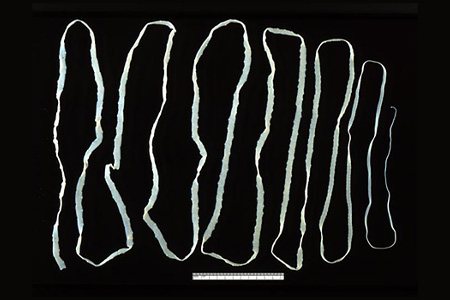
Segmented worms that live inside the intestines of humans and animals are called tapeworms. It is also known as a cestode. As it stays inside the intestine, it surely is parasitic.
There are almost 6,000 species of tapeworm in the world. Usually, the length of these worms varies from 1 mm to 15 m. The beef tapeworm can grow up to 20 m.
Amongst all cestodes, the longest of the species is Tetragonoporus calyptocephalus, known as the whale tapeworm. These can grow up to 40 meters (130 feet).
The reproduction capacity of these worms depends on finding the correct host body. Although most tapeworms need two types of hosts to reproduce, some need three types of hosts.
A tapeworm lives a long life. If adopted into a well-suited host body, it can live for up to almost 30 years. Unfortunately, especially thanks to cats, you can consider these types of house worms.
These worms cause infection in the intestine. In most cases, people tend to get infected by tapeworms from raw food. However, it doesn't cause any serious health issues. You'll find them in your cat litter or cat litter alternatives when you go to scoop it, sometimes. Cats pick them up from eating fleas.
Flatworms
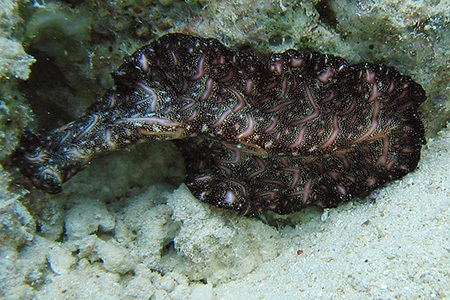
Flatworms are another invertebrate that has a flat body. Although they are mostly parasitic, 20% of flatworms are free-living.
The coelom is known as the body cavity. Flatworms don't have any body cavity. Besides, the respiratory system is also absent in them.
This creature is bilateral. A bilaterally symmetrical body means that if you cut a flatworm in half, you will see organs similarly distributed on both sides in the same order.
These worms can grow from 1 mm to 20 meters, similar to tapeworms. The three layers of the flatworm's body are known as the ectoderm, endoderm, and mesoderm.
Flatworms can be divided into four groups — Monogenea, Cestoda, Turbellaria, and Trematoda. All types of worms in that group belong to the same family.
Through raw food, a few of the species and their larvae can enter the host body and cause serious health problems.
Flukes
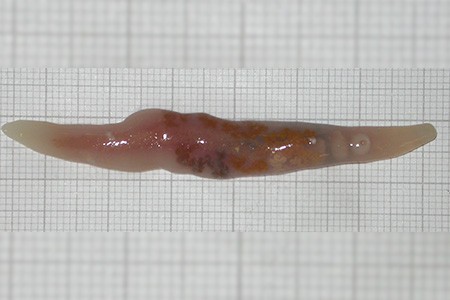
Flukes, or Trematoda, are one type of Platyhelminthes. The life cycle of this species of worms is quite complex. They need two hosts to complete the reproduction.
Mollusca and vertebrates are their favorite host bodies, where they love to reproduce. The larvae tend to stay in snails, and the adults are mostly observed in the intestinal veins of vertebrates.
Liver flukes are the most common ones that infect the human body. It can enter your body via eating raw water plants, as watercress is one of the most suitable places for larvae.
These worm types can cause infection of the liver and, if not diagnosed well, can be hazardous to the human body. The life span of these parasites is about 25–30 years.
Roundworms
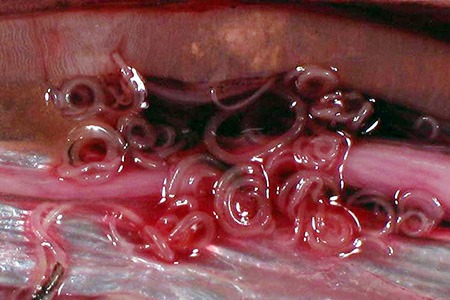
Roundworms are also known as nematodes. Their names have two origins, which came from both Greek and Latin words. The Greek word "nemat" means thread, and "ote" is the Latin word that means resembling.
Nematodes are bilaterally symmetrical and have a cylindric-shaped head. The round head is the reason behind its name.
Round worms' body walls are separated from their inner digestive tubes. There is a fluid that fills the cavity between the body wall and the digestive tube.
It is considered a species-rich animal group. There are more than 20,000 species of nematodes, with speculation the number goes into the millions. The free-living nematodes live in water and soil. And others are parasitic.
The parasitic types of worms can be both endoparasites and ectoparasites. Some roundworms can be fatal, while some cause mild issues.
Threadworms
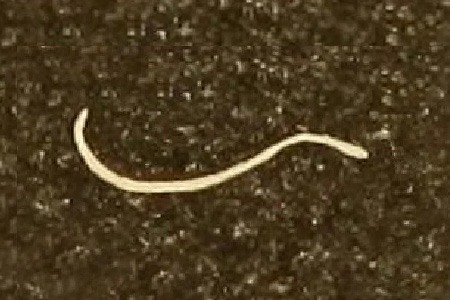
Threadworms have another name, which is more common to us. And that is pinworm or seat worm. These parasitic worms are mostly found in the human intestine.
The male and female bodies of threadworms have different distinctive features. The male body can grow from two to five mm long and has a thickness of 0.2mm.
And the female threadworms are eight to thirteen mm long and 0.2 mm thick. Pinworms produce transparent eggs that are visible to the naked eye. The larvae are about 140–150 μm in length. Threadworms can be spotted in human stool.
Hookworms
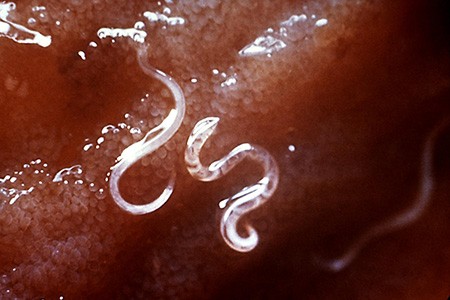
Hookworms are one type of roundworm. The number of species of hookworms observed in wild mammoths is 68. It can infect humans, cattle, cats, dogs, and other animals as well.
It has gotten its name because of its bowed head. The bent head looks like a hook. Female hookworms are usually larger than male ones. The male worm's body is usually 10 by 0.5 mm.
Where many different worms infect hosts through their eggs, hookworms use larvae. Usually, hookworms grow in soil. This species cannot live in a cold environment.
For surviving, it needs a temperature that is at least 18 degrees Celsius. Although, this species dies in contact with direct sunlight.
Earth Worm
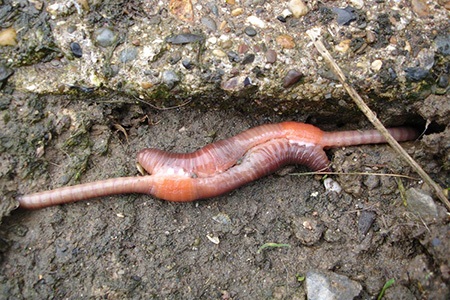
Earth worms come from the phylum Annelida. There are more than 7000 species of earthworms. The most significant feature of an earthworm is setae.
This one is among the most common ones, as you can find it in almost all corners of the world. Although tropical and warm soil is the most favorable environment for earthworms, you may find them in mulch beds and in mulch alternatives, too.
As it doesn't have any respiratory system, it respires through the skin. These worms are at least 3 mm long and can grow up to 3 m. And the width of the body differs from 1 mm to 25 mm.
The average life expectancy of these types of house worms is four to eight years, although a few varieties can live for only one to two years.
Bristle Worms
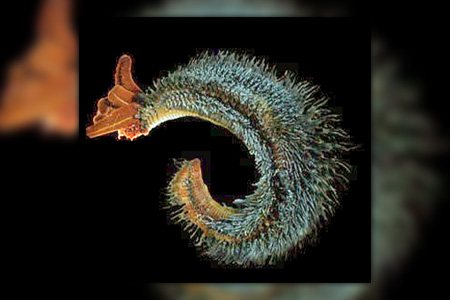
Bristle worms are a type of sea worm that is also known as a polychaete. Although 98% of species are found in the sea, the other ones stay in freshwater. There are 10,000 species found in this class.
These different types of worms stay on the upper surface of the marine area. The length is usually less than 10 mm. However, there are some variants that can grow up to 3 m.
The color pattern of its body is generally iridescent or brightly colored. Some species can even be luminescent. Most polychaetes reproduce sexually and have a life span of only 24 months.
Giant Tube Worms
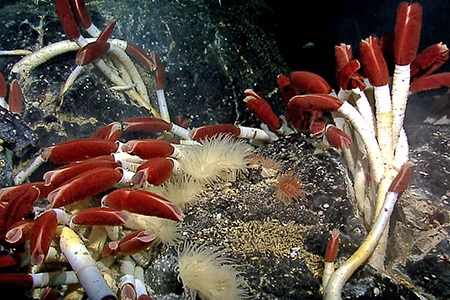
The scientific name of this giant tube worm is Riftia pachyptila. These marine invertebrates are members of the phylum Annelida and are mostly found around the seashore. The favorable temperature for these worms is 2 to 30 degrees C.
One of the salient features of the giant tube worm is its tubular body. The width of the tubular body is about 4 cm, and the length is not more than three meters.
A few may confuse this species of worms with shipworms, but they are completely two different species from two different families.
Ribbon Worm
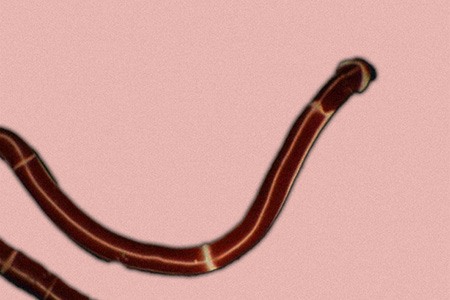
Another name for ribbon worms is proboscis worms. These worms are amongst the slimmest ones, as their bodies are relatively thinner than the other worms. It can have four different colorations on its body. And they are yellow, orange, and green.
These Nemarteans have chemosensors in their bodies that help detect light. Besides, they respire through the skin like some other worms. These different kinds of worms have a lot of unique things going on within their bodies.
Although the length is usually between 1 mm and 20 centimetres, there was a species found that had a length of 54 meters. This species is not among the long-living ones. It has only an 18-month life span.
Spiny Headed Worms
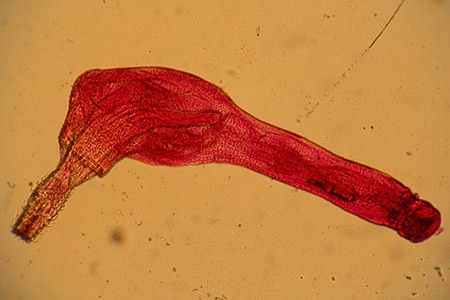
Spiny headed worms, or Acanthocephala, are parasitic worms. Some call them thorny-headed worms. In contrast to other invertebrates, the host body is not vertebrate in this case.
They find their comfort in an aquatic amphipod named Gammarus lacustris. No infestation in the human body has been recorded for Acanthocephala.
The life cycle of thorny-headed worm types is not simple. It gets even more complicated as it needs multiple hosts to complete the reproduction. As a matter of fact, only 25 species are successful in finishing reproduction.
Peanut Worm
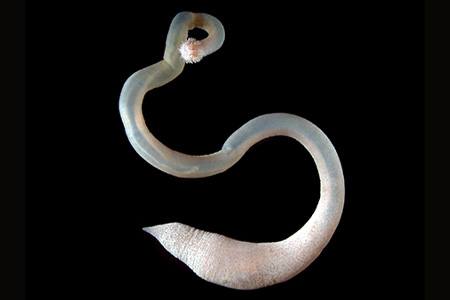
The peanut worm is a marine worm that has the scientific name of sipunculid. These types of worms are unsegmented and have an introvert mouth that can be extended and retracted. This mouth has tentacles in it shaped around a ring.
These worms can be as short as a few millimeters and up to 500 millimeters or more (which is over 1.6 feet). They can be found on seabeds in oceans all around the globe since they're benthic creatures (meaning bottom-dwelling). They burrow into the mud, live in empty mollusk shells, and other discarded shells.
Spoon Worm
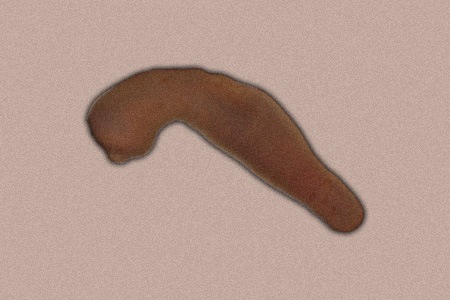
The spoonworm is a member of the Echiura phylum, which leads to their scientific name being echiurid. These are almost exclusively marine worms though they can rarely be found on land. They're described as shaped like a sausage but their head has a flat shape that curves inwards towards the tip, thus the name "spoon worm".
These can be tiny or up to 2 feet in length at the most. Around 150 species have been discovered so far. You'll find these inhabiting cracks and crevices in rocks and burrowing into the mud of seabeds.
Beard Worm
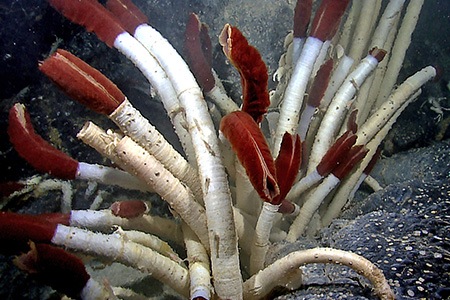
Beard worms, also called beardworm and by the scientific name siboglinid, are also polychaetes (meaning marine worms). These different worms are sedentary, living in one place, usually in tubules on the seafloor all around the world.
This species of worms name comes from the pinnate masses growing aloung the anterior end of most members of the species groups. These are feather-ish extensions that look like a beard. They're the only multicellular beings that become adults without a mouth or anus, as their intestine disappears as they age.
Arrow Worm
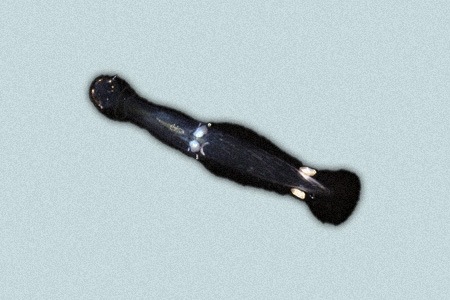
The arrowworm is known as chaetognath. They're marine worms, invertebrates, and are all in the phylum called Chaetognatha. They have a transparent or opaque appearance and they take on the appearance of an arrow.
There's 120 species of arrowworm, al ranging between 3 millimeters up to 100 millimeters.You'll find them in cold water, though you'll find smaller ones in warmer tropical water. The body of these worm types has three segments which are the head, trunk, and tail.
Types of Worms to Discover in the Wild
In this world, the real number of worm breeds is still indecisive. There are so many species that have yet to be described. And no one knows how many different types of worms are still unknown. Although worms look gross and stay in the dirt, their contribution to the ecosystem is undeniable.
You'll Also Enjoy:
- Maggots in Compost: Good or Bad? Here's What to Do
- 7 Plants That Repel Fleas & Provide Secondary Benefits You'll Love
- 15 Types of Termites to Identify & Fight to Preserve Your Wood
- 15 Types of Gnats We All Wish Would Buzz Off [Identification Guide]
- 15 Types of Grasshoppers to Look for Out in the Wild



